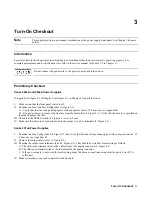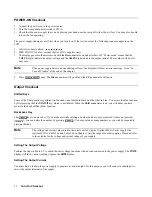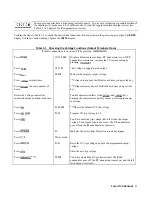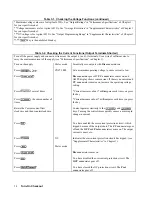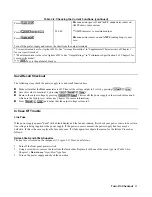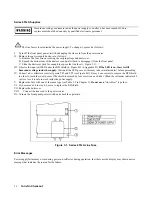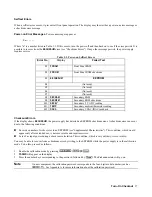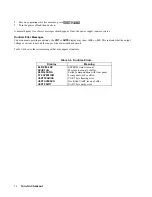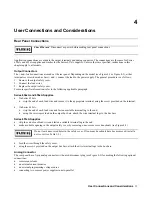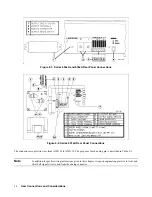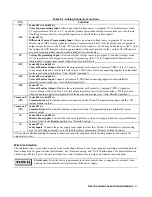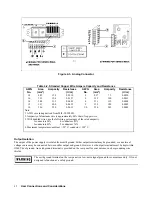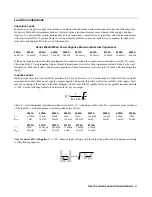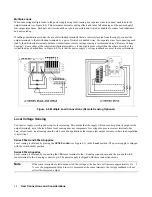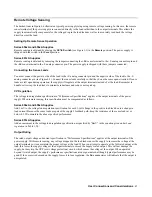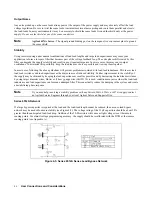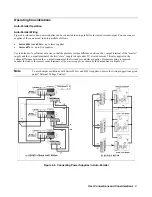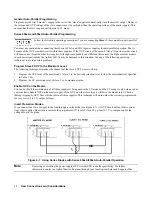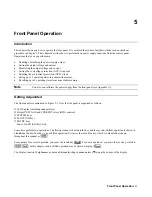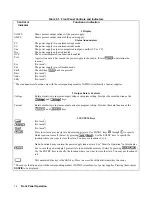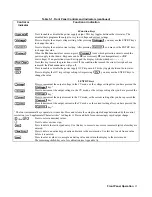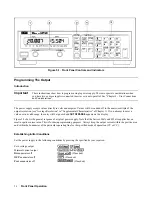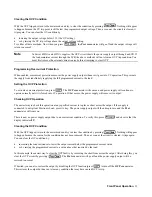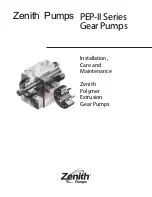
User Connections and Considerations
45
Remote Voltage Sensing
The dashed lines in Figure 4-4 illustrate a typical power supply setup using remote voltage sensing. In this case, the remote
sense terminals of the power supply are connected directly to the load rather than to the output terminals. This allows the
supply to automatically compensate for the voltage drop in the load leads as well as to accurately read back the voltage
directly across the load.
Setting Up Remote Sense Operation
Series 654xA and 655xA Supplies
Remote sensing is obtained by placing the
SENSE switch
(see Figure l-1) in the
Remote
position. The power supply is
shipped with the switch in the
Local
position.
Series 667xA Supplies
Remote sensing is obtained by removing the jumpers connecting the
+LS
sense terminal to the +S analog connector pin and
the
-LS
sense terminal to the -S analog connector pin. The power supply is shipped with these jumpers connected.
Connecting the Sense Leads
You must connect the positive side of the load to the +S analog connector pin and the negative side of the load to the -S
analog connector pin (see Figure 4-3). Connect the sense leads carefully so that they do not become open-circuited. If sense
leads are left open during operation, the supply will regulate at the output terminals instead of at the load. Remember to
bundle or tie wrap the load leads to minimize inductance and reduce noise pickup.
CV Regulation
The voltage load regulation specification in “Performance Specifications” applies at the output terminals of the power
supply. When remote sensing, this specification must be compensated as follows.
Series 654xA and 655xA Supplies
Add 3 mV to the voltage load regulation specification for each 1-volt change in the positive load lead due to a change in
load current. Because the sense leads are part of the supply's feedback path, keep the resistance of the sense leads at or
below 0.5
Ω
to maintain the above specified performance.
Series 657xA Supplies
Add an increment to the voltage load regulation specification as specified by “
∆
mV” in the equation given under
Load
regulation
in Table 1-2b.
Output Rating
The rated output voltage and current specification in “Performance Specifications” applies at the output terminals of the
power supply. With remote sensing, any voltage dropped in the load leads causes the supply to increase the voltage at the
output terminals so it can maintain the proper voltage at the load. When you attempt to operate at the full-rated output at the
load, this forces the supply voltage at the output terminals to exceed the supply's rated output. This will not damage the
supply, but may trip the OVP (overvoltage protection) circuit, which senses the voltage at the output. When operated
beyond its rated output, the supply's performance specifications are not guaranteed, although typical performance may be
good. If the excessive demand on the supply forces it to lose regulation, the
Unr
annunciator will indicate that the output is
unregulated.

